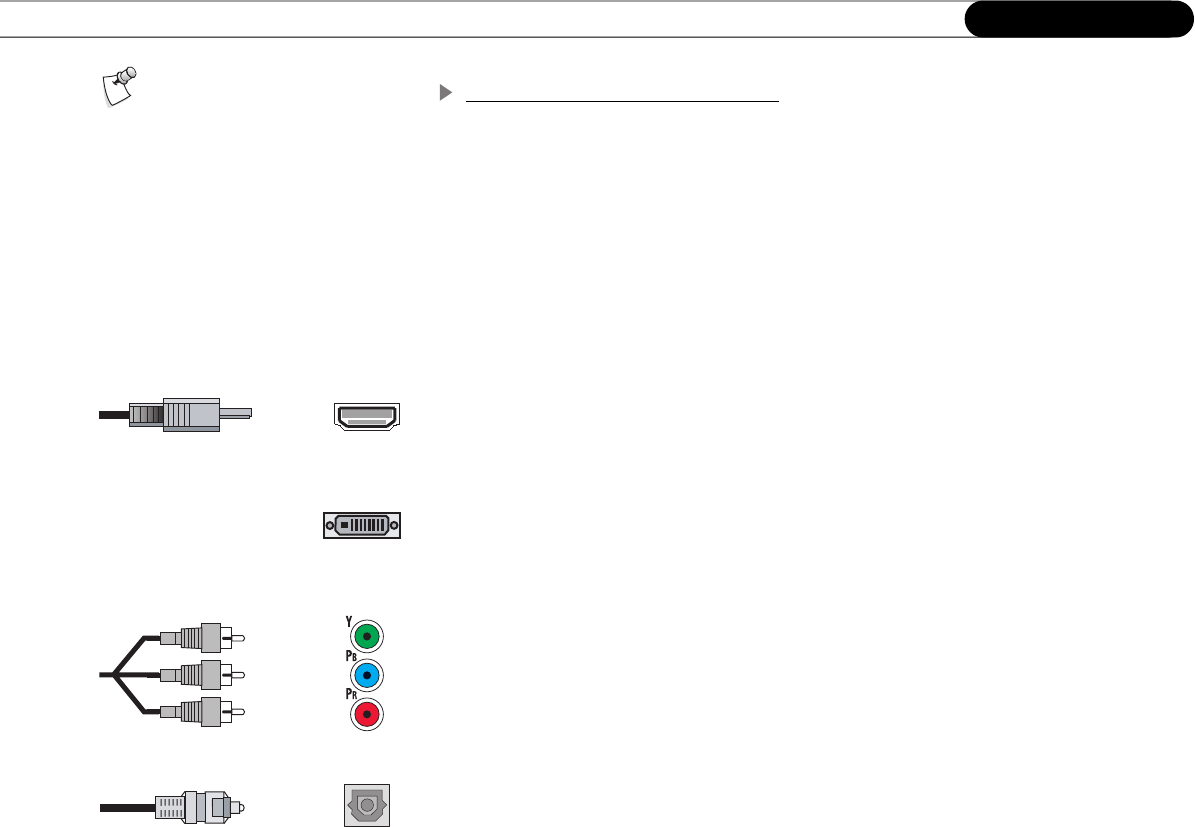
10
Chapter 1
Connecting
Choosing Audio and Video Cables
Your DIRECTV HD DVR can output either standard, enhanced, or high-definition video
signals, and either analog or digital audio signals. If you have a TV, A/V receiver, or home
theatre system that accepts high-definition video and digital audio signals, using these
connections will provide the best possible audio and video quality.
The HD DVR offers several video output formats for standard and high-definition TV
signals. In order to see a high-definition picture, you must connect a high-definition video
cable from your HD DVR to your TV, and choose the appropriate video output setting. See
“Video Setup” on page 29 for more information about video output format settings.
High-Definition Video and Digital Audio
The HD DVR provides two output jacks for sending HD video: HDMI and Component
Video. While a cable is connected to the HDMI Output jack, the Component Video Output
is disabled. You can’t view video from both the HDMI Output and the Component Video
Output at the same time. See page 31.
If your TV has an HDMI (High-Definition Multimedia Interface) input jack, you can use
the HDMI cable (ᕡ, supplied) to send both HD video and digital audio signals from your
HD DVR in a single cable. Although HDMI sends both audio and video, make a separate
audio connection to your A/V receiver if you want to use a multi-speaker sound system.
If your TV has a DVI input jack, you can use the HDMI-to-DVI cable (ᕢ, supplied) to
connect your HD DVR (see Option A on page 14). Since a DVI jack accepts only video,
you will need to connect a separate cable for audio if you use this cable for video.
The HDMI and HDMI-to-DVI cables also allow other information to pass between your HD
DVR and your TV, such as High-definition Digital Content Protection (HDCP) used with
some HD broadcasts. We recommend you connect your HD DVR to a TV that is
compatible with HDCP. For more about copyright restrictions, see page 78.
Due to copyright restrictions, you
may not be able to view some
high-definition programs in high-
definition format using the HD DVR.
Wherever possible, you should connect
both high-definition and standard video
cables to permit standard viewing of
programs if HD viewing is restricted. For
more information, see page 79.
(red)
(blue)
(green)


















